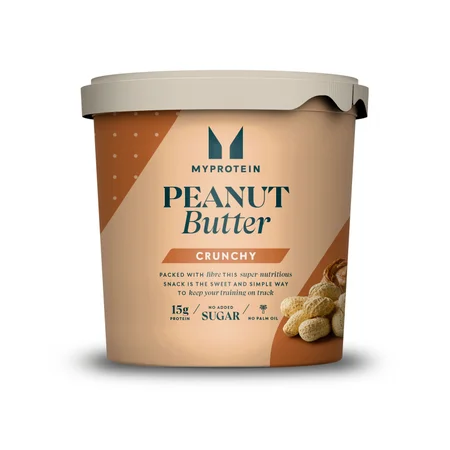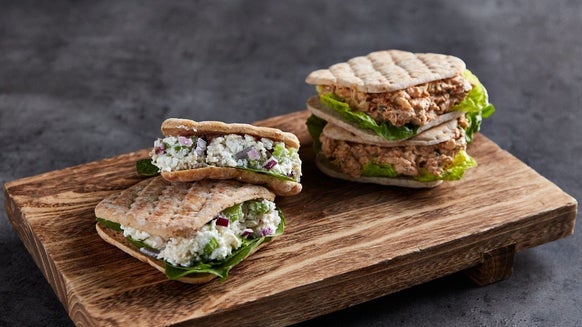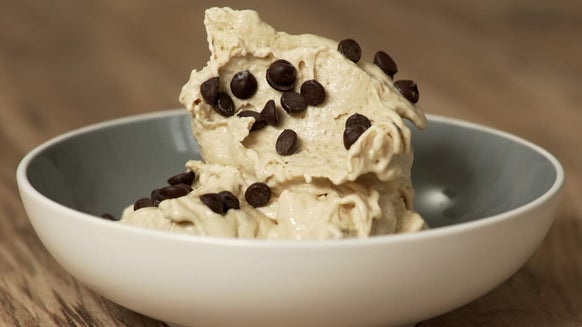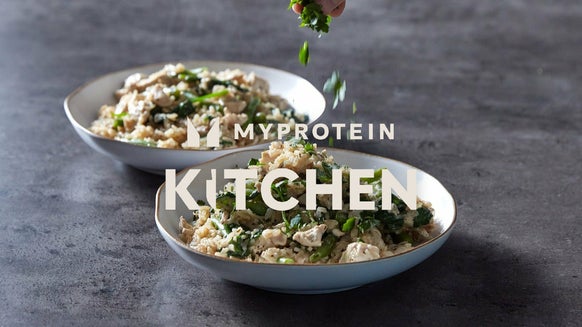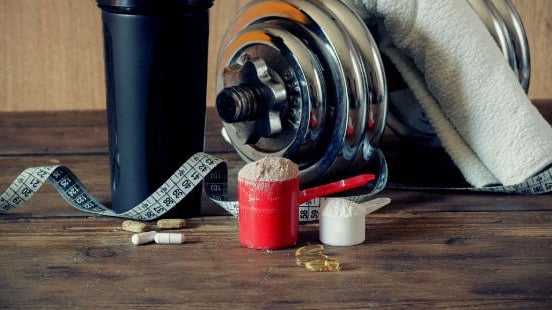What Is Carb Cycling And How Does It Work? Benefits And Tips

If you are someone who likes a planned routine and doesn’t want to constantly cut all carbs from your diet, carb cycling might be the right eating pattern for you.
Carb cycling factors in your workouts when calculating your meal plan, matching up your diet to the days that your muscles need more fuel. Read on to learn about the potential benefits of carb cycling.

- What is carb cycling?
- How does carb cycling work?
- Who is carb cycling suitable for?
- Carb cycling for muscle and sports performance
- Can carb cycling be used for weight loss?
- Is carb cycling the same as keto?
- Benefits of carb cycling
- How to do carb cycling
- Low-carb vegetables
What is carb cycling?
Carb cycling is a diet pattern that takes advantage of the benefits of low carb diets, but also considers the fuel you need for your workouts.
It’s typically followed for a few weeks or months at a time but not full time like a ketogenic diet. Carb cycling simply means eating a higher carbohydrate diet on some days and lower carbs on other days.
Depending on your goals (building muscle, weight loss, etc.) you might plan your carb cycling diet for weeks at a time or just take it day by day.
How does carb cycling work?
Carb cycling works by acknowledging that most people don’t follow exactly the same activity pattern every single day.
Even if you work out 6 days per week — maybe 2 days are HIIT cardio and 4 days are weight lifting — you’d need less carbs with weight training than intense cardio, and even fewer on a rest day.
On the weekends you might be outside all day and never stop moving, but be chained to your desk on weekdays, making your carb needs lower.

Who is carb cycling suitable for?
Carb cycling is suitable for anyone who’s working towards changing their physique or performance. If you’re trying to gain muscle, maintain muscle, lose fat, all of these are manipulated by the amount of carbs (and protein and fat) that you eat.
If you find that measuring and tracking your intake doesn’t make you comfortable, it might be best to adapt carb cycling to a less structured routine.
Carb cycling for muscle and sports performance
Carb cycling is a popular approach for athletes who want to improve their body composition and performance. Most athletes know they need extra protein to add muscle, but the rest of your diet matters, too.
Muscles need fuel — and that fuel comes in the form of carbs. The key with carb cycling is to plan carb intake based on the intensity of your workouts. They provide the energy you need to perform at your best.
Recovering with the right amounts of protein and carbs primes your muscles for your next workout. The amount of carbs and protein you need depend on your workout — weightlifting, HIIT training, and endurance cardio all call on your muscles to work in different ways.

Can carb cycling be used for weight loss?
We know that cutting back total calories can lead to weight loss, however, we often see carbs as the enemy in the way of achieving our goals.
With carb cycling, you plan ahead and make thoughtful choices about what carbs to eat, and when, without feeling restricted by cutting them out completely.
Although there are many diets that can lead to successful weight loss, the appeal of carb cycling is knowing that no food groups are entirely off limits.
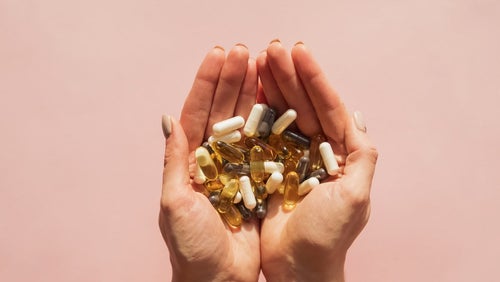
Top 5 Supplements For Weight Loss
These could help kickstart your weight-loss journey or bust a plateau.
Is carb cycling the same as keto?
Keto and carb cycling are the same eating pattern. A ketogenic diet, or keto, forces your body to burn fat for energy by greatly restricting your carb intake. Keto is only successful when you keep your carbs very low for a consistent period of time.
Carb cycling varies the amount of carbs in your diet without cutting them out completely which can make this approach more sustainable for the long term.

Which Foods Can You Eat On A Keto Diet?
There's a lot more than you might think!
Benefits of carb cycling
1. Lean Muscle Mass Growth/Retention
Carb-cycling can be used for both fat-loss and weight gain. The major difference is the number of low-carb days, giving either a net value of calorie deficit or calorie surplus.2
By adding a few low carb days during your mass gain programme, you give your body a chance to trim down on some body-fat (due to reduced lipogenesis and increased fatty-acids break-down) you might be putting on.
On the opposite side, by adding a few high carb days during your fat loss programme, you create an anabolic environment; possibly gaining some muscle and definitely holding onto more mass (due to increased amino acids uptake, increased protein synthesis and reduced protein breakdown).
In both of the scenarios, over a week’s time you will be simultaneously losing fat and gaining/retaining muscle.

2. Endocrine Stimulation
It’s been well documented that long periods of low carb intake can decrease the thyroid hormone levels (T3), leading to a reduction in Basal Metabolic Rate (number of calories burnt at rest) which makes it difficult to overcome fat-loss plateaus.3 Planned, high-carb days will bump up the T3 production, up-regulating your metabolism and allowing you to shred even more body-fat.4
What’s more, low carb intake (30% of calories coming from carbs) has been shown to decrease the free testosterone to cortisol ratio following intensive training in as short as three days. By throwing in higher carb days here and there, you’ll be able to raise the anabolic-testosterone to catabolic-cortisol ratio and welcome back the gains.5
Carbohydrate over-feeding can also raise leptin levels – the ‘satiety hormone’ which is produced at the lower rate in response to shrunken fat-cells (fat loss). Obviously being less hungry for few days after a high carb day will help you to stick to your cut.6
Similarly, having a good mood following a higher carb day may be helpful in both training motivation and diet adherence. Insulin may help with that by making the tryptophan; pre-cursor of ‘good mood’ neurotransmitter (serotonin) more readily available for the brain.1

3. Glycogen Super-Compensation
A few days of low carbs combined with hard training can significantly reduce the amount of glycogen stored in your muscles. This increases the production of an enzyme called glycogen synthase, which works extra hard to turn every little glucose it can into glycogen (which is stored in muscles and liver).7
Once you’ve raised your carb intake, it’ll take a while for the body to recognise that there is enough glucose around for the enzyme to take it easy. Meanwhile your muscles will soak up carbs like a sponge, storing glycogen above its normal capacity- meaning fuller, harder and bigger muscles. Sure, this effect may not be permanent but timed right it makes a dramatic difference when it comes to taking the clothes off for a stage or photo-shoot.

How to do carb cycling
To do carb cycling, first you want to have a good idea of your calorie needs and macro breakdown (use this handy macro calculator to get started). Next, plan out a typical week of workouts, deciding when you will have high intensity workouts, HIIT vs endurance workouts, and when you’ll take rest days.
Based on your workout plan, you’ll want to choose which days you’ll follow a higher carb diet (between 50-60% of your calories coming from carbs) and which days you’ll stick to low carb (between 30-40% of your calories from carbs).
Consider alternating these days if possible, knowing that your lower carb days will include higher amounts of protein and healthy fats. If you vary your rest days (i.e. sitting on the couch one day vs talking a long walk), you might also want to incorporate moderate-level carb days.
Make Sure You’re Eating Enough
Undereating can really slow down progress towards your goals. Whether you’re trying to build muscle or lose weight, not consuming enough calories can lead to burning muscle and slowing down your metabolism long term.
So, even though you’re limiting carbs, be sure to replace those missing calories with high quality sources of protein and healthy fats.

Food Calories Chart | What's In Your Fruit, Veg, Meat And Other Daily Produce?
A guide on the calorie content of every day foods.
Balance your macros
Using a macro calculator, get your ideal macros, then use the various activity levels to get an idea of how to change up your carb intake based on your planned workouts.
Another approach is to calculate your macros once, then determine what percentage of your calories are coming from carbs — and use that to target 50-60% on high carb days and 30-40% on low carb days. If you’re still not sure where to start, reach out to a registered dietitian for help.
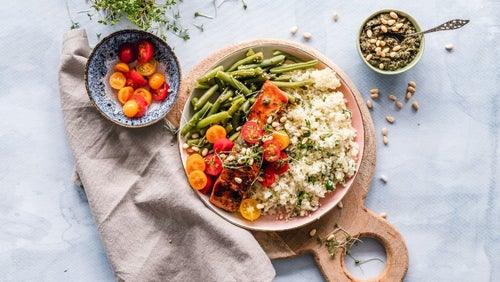
Macro Calculator | How To Calculate Your Macros For Flexible Dieting & IIFYM
Use our calculator to work out your macros.
Choose high quality carbs
So, now that you know you can use carbs to your advantage, don’t forget that you need to choose the best kinds of carbs for optimal results.
Focus on carbs that provide other nutrition — like fibre (fruits and veggies), calcium (dairy products), and whole grains (vitamins and minerals).
While chocolate cake and whole grain bread are both primarily sources of carbohydrate, the first isn’t giving you much benefit while the second is packed with good-for-you nutrients.
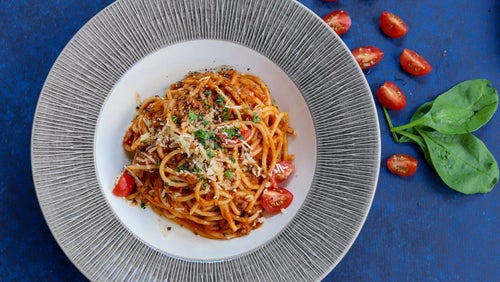
Why Carbs Aren't The Enemy | Different Types of Carbohydrates & Benefits
It's time to make friends with carbs...
Hydrate
Don’t forget you need to properly hydrate no matter what your carb levels are for the day. When you’re on a higher carb day and your muscles need carbs for fuel, water is a key part of the reaction that frees the energy from the carbs you eat.
If you’re working out extra hard and sweating a lot, you might choose to use a sports drink with electrolytes - but don’t forget to add in any carbs that those drinks might contain.

How Much Water Should I Drink A Day?
Plan your meals
The key to successful carb cycling is planning your meals (including macros and carbs) ahead of time.
This way you know exactly what to eat to meet your goals and can reduce the temptation to stray from your plan. The chart below is based on a 2000 calorie goal.
This plan is for someone who plans on intense workouts Monday, Thursday, and Saturday, with an active rest day on Wednesday and low activity Tuesday, Friday, and Sunday.
| Carb intake | Breakfast | Lunch | Optional snack | Dinner | Totals | |
| Monday | High carb | Egg, veggie, and cheese sandwich on whole grain bread with fruit | Egg salad with whole grain crackers | Baby carrots and hummus | Brown rice stir fry with chicken and broccoli |
|
| Tuesday | Low carb | Egg whites with spinach, salsa, cheese, avocado | Lettuce wrapped chicken tenders with buffalo sauce and sliced bell pepper | Celery & peanut butter | Strip steak and asparagus with lentils |
|
| Wednesday | Moderate carb | Protein shake with fat free milk | Grilled salmon and sweet potato | Greek yogurt | Bean and cheese quesadilla with corn salsa |
|
| Thursday | High carb | Oatmeal with fresh berries and almond butter | Salad with grilled chicken, strawberries, and goat cheese | Protein shake with milk | Fish sandwich and green beans |
|
| Friday | Low carb | Protein pancakes and turkey bacon | Vegetable soup with hard boiled eggs and an apple | Trail mix (nuts and dried fruit) | Turkey burger with cheese, tomato, avocado (no bun), cauliflower rice |
|
| Saturday | High carb | Toast with peanut butter and banana slices | Whole grain pizza (2 slices) and cucumber | Cottage cheese with berries | Grilled chicken and vegetable skewers with quinoa |
|
| Sunday | Low carb | Scrambled eggs with sausage and tomato slices | Tuna-salad stuffed celery stalks, side of blueberries | 2 rice cakes with cheese spread | Zucchini noodles with meat sauce and mozzarella |
|
Low-carb vegetables
When you’re following a low carb diet, vegetables are often some of your best choices - not only are they low on carbs, but plants are packed full of fibre (to keep you full) and vitamins and minerals to boost your health. They also can be super tasty, inexpensive and easy things to snack on throughout the day.
1. Lettuces
While there are many types of lettuces and greens, they are all high in water content, fibre, and low in carbs. The exact nutrition content varies based on colour and variety, but adding lettuce to any dish - or a salad with any meal - keeps carbs low and helps you stay satisfied while providing key nutrients.

2. Mushrooms
Mushrooms, while they vary a bit by type, can be as low as 0.3g of carbs per 100g. With so many varieties of mushrooms, you can choose from many flavours and textures, delicious both raw or cooked.
Mushrooms can be a great substitute for meat as well, one of the few plants that give the same “umami” flavour that meats have. Mushrooms are high in selenium, vitamin C, and choline. These nutrients have antioxidant properties that can reduce inflammation.8
3. Broccoli
Broccoli is part of the cruciferous vegetable family, and is a popular vegetable that is easy to prepare at home or find when eating out.
Very low in carbs, about 0.4g per 100g, broccoli is great for breakfast in an omelette, for lunch in a stir-fry, or as a side dish at dinner. Vegetables in the broccoli family are packed with antioxidants, but broccoli also can protect your bones thanks to its calcium value and boost immunity with vitamin C.9

4. Bok Choy
Bok choy is not only low in carbs, but also one of higher-protein content vegetables you can find. Related to broccoli and also packed full of antioxidants. While easy to prepare it raw as part of a salad, bok choy is also delicious cooked and added to soups.
Like broccoli, it is a good source of calcium, Vitamin C, and Vitamin A. It has a high water content and can be very filling.
5. Spinach
While lettuces were highlighted at the top of the list of low carb veggies, spinach deserves its own spot thanks to its powerhouse of nutrients.
In general, the darker green the vegetable, the more nutrient dense it is. Known as a “superfood”, spinach is packed with Vitamin C, magnesium, and potassium, but also iron - which is hard to find in plant-based foods.

6. Chilli peppers
While chili peppers contain vitamins, minerals and fibre that make them a great low carb food, they are also the most common source of capsaicin in the diet.
Responsible for the spice in chili peppers, capsaicin is a powerful phytonutrient that has been linked to many benefits for heart health.
7. Celery
Celery is so low in carbs that some people refer to it as a “negative calorie” food. While this claim is not necessarily true; the high fibre and water content of celery make it even lower in net carbs.
Like many other vegetables, celery is a good source of vitamin C. Celery is great on its own, with peanut butter for a snack, or chopped in any sort of savoury dish or soup.
8. Artichokes
While they require some chopping and preparation, the “heart”, or interior most-section of an artichoke has a unique flavour and lots of nutrition.
Packed with magnesium, they are beneficial to maintain a healthy heart and known as a “pre-biotic”, which can help support healthy digestion.11

9. Asparagus
With only 1.4g of carb per 100g, asparagus is one of few foods that is an excellent source of folate - or vitamin B-9. Folic acid is important for pregnant women, but is also important for mental health.12
10. Courgette
Courgette has become a wildly popular low-carb substitute for things like pasta, with only 1.5g of carbs per 100g. While “courgetti” or courgette spaghetti can even be found at most supermarkets, it’s easy to make them at home with a vegetable peeler.
Courgette is not only low in carbs but also easy to grow at home and use to bulk up other dishes with extra fibre and water content.
Take Home Message
Carb cycling can be a flexible dieting option, but it still requires some planning and calculation to be successful. Because it doesn’t cut out carbs completely, it can feel more achievable than a very low carb diet.
Matching up your activity habits with your meal plan is a key to seeing the results you want with carb cycling.

The Complete Guide To Protein Powders For Beginners
Match your protein to your training.
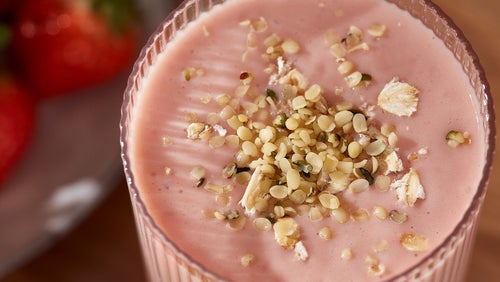
Protein Shakes For Weight Loss
Here's how to use protein shakes to your advantage.

Claire is a Registered Dietitian through the Academy of Nutrition and Dietetics and a board-certified Health and Wellness Coach through the International Consortium for Health and Wellness Coaching. She has a Bachelor of Science in Biology and a Master’s degree in Clinical Dietetics and Nutrition from the University of Pittsburgh.
Talking and writing about food and fitness is at the heart of Claire’s ethos as she loves to use her experience to help others meet their health and wellness goals.
Claire is also a certified indoor cycling instructor and loves the mental and physical boost she gets from regular runs and yoga classes. When she’s not keeping fit herself, she’s cheering on her hometown’s sports teams in Pittsburgh, or cooking for her family in the kitchen.
Find out more about Claire’s experience here.
- Pigman, W. (Ed.). (2012). The carbohydrates: chemistry and biochemistry. Elsevier.
- Soenen, S., Bonomi, A. G., Lemmens, S. G., Scholte, J., Thijssen, M. A., Van Berkum, F., & Westerterp-Plantenga, M. S. (2012). Relatively high-protein or ‘low-carb’energy-restricted diets for body weight loss and body weight maintenance?. Physiology & behavior, 107(3), 374-380.
- Bolla, A. M., Caretto, A., Laurenzi, A., Scavini, M., & Piemonti, L. (2019). Low-carb and ketogenic diets in type 1 and type 2 diabetes. Nutrients, 11(5), 962.
- Loucks, A. B., & Heath, E. M. (1994). Induction of low-T3 syndrome in exercising women occurs at a threshold of energy availability. American Journal of Physiology-Regulatory, Integrative and Comparative Physiology, 266(3), R817-R823.
- Lane, A. R., Duke, J. W., & Hackney, A. C. (2010). Influence of dietary carbohydrate intake on the free testosterone: cortisol ratio responses to short-term intensive exercise training. European journal of applied physiology, 108(6), 1125-1131.
- Kong, A., Neuhouser, M. L., Xiao, L., Ulrich, C. M., McTiernan, A., & Foster-Schubert, K. E. (2009). Higher habitual intake of dietary fat and carbohydrates are associated with lower leptin and higher ghrelin concentrations in overweight and obese postmenopausal women with elevated insulin levels. Nutrition research, 29(11), 768-776.
- Goforth Jr, H. W., Laurent, D., Prusaczyk, W. K., Schneider, K. E., Petersen, K. F., & Shulman, G. I. (2003). Effects of depletion exercise and light training on muscle glycogen supercompensation in men. American Journal of Physiology-Endocrinology and Metabolism, 285(6), E1304-E1311.
- Calvo, M. S., Mehrotra, A., Beelman, R. B., Nadkarni, G., Wang, L., Cai, W., Goh, B. C., Kalaras, M. D., & Uribarri, J. (2016). “A Retrospective Study in Adults with Metabolic Syndrome: Diabetic Risk Factor Response to Daily Consumption of Agaricus Bisporus” (White Button Mushrooms). Plant foods for human nutrition (Dordrecht, Netherlands), 71(3), 245–251.
- Yagishita, Y., Fahey, J. W., Dinkova-Kostova, A. T., & Kensler, T. W. (2019). “Broccoli or Sulforaphane: Is It the Source or Dose That Matters?”. Molecules (Basel, Switzerland), 24(19), 3593. https://doi.org/10.3390/molecules24193593
- Weber LV, Al-Refae K, Wölk G, Bonatz G, Altmüller J, Becker C, Gisselmann G, Hatt H. “Expression and functionality of TRPV1 in breast cancer cells.” Breast Cancer (Dove Med Press). 2016;8:243-252
- Ben Salem, M., Affes, H., Ksouda, K., Dhouibi, R., Sahnoun, Z., Hammami, S., & Zeghal, K. M. (2015). “Pharmacological Studies of Artichoke Leaf Extract and Their Health Benefits.” Plant foods for human nutrition (Dordrecht, Netherlands), 70(4), 441–453.
- Lim, S. Y., Kim, E. J., Kim, A., Lee, H. J., Choi, H. J., & Yang, S. J. (2016). “Nutritional Factors Affecting Mental Health.” Clinical nutrition research, 5(3), 143–152. https://doi.org/10.7762/cnr.2016.5.3.143

